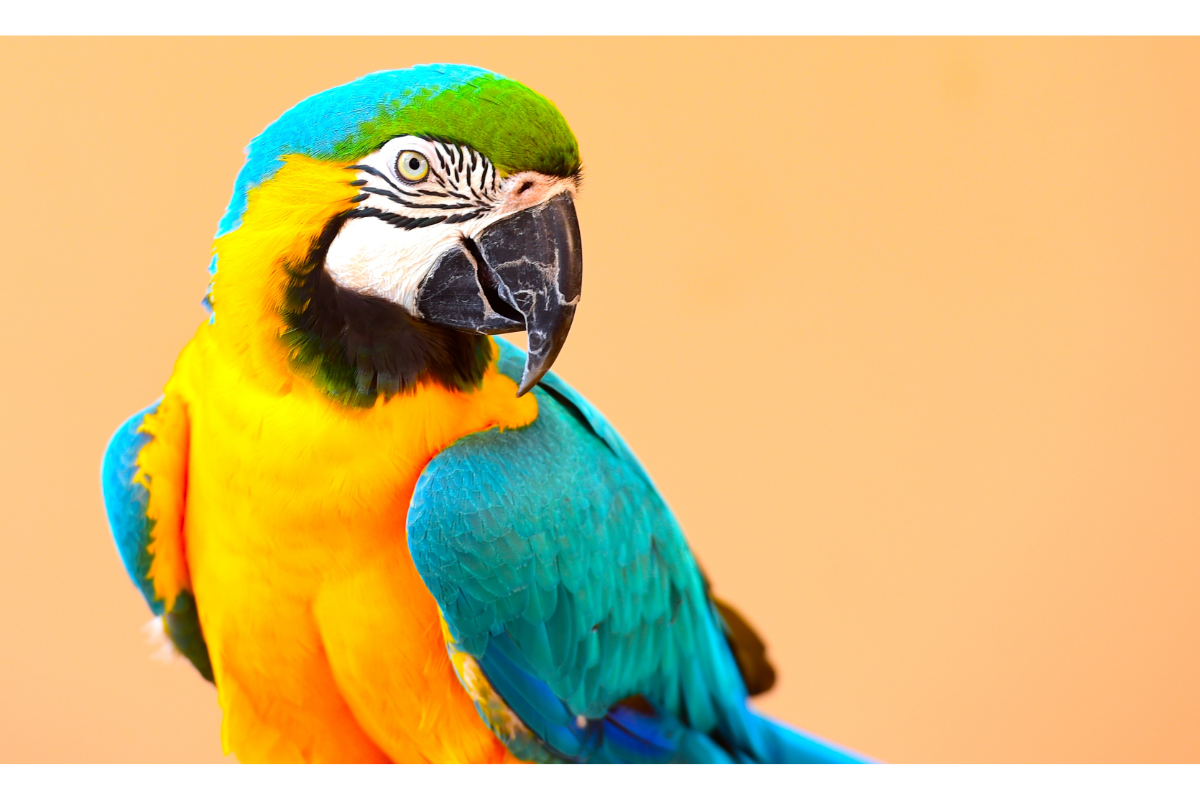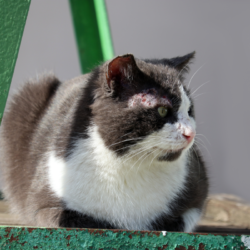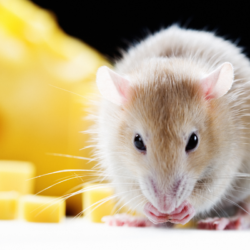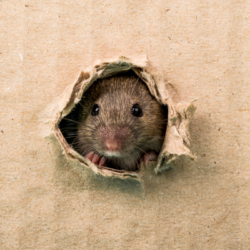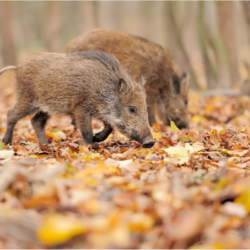Ornithosis, also known as psittacosis, is a rare bacterial infection caused by Chlamydia psittaci . This bacterium is found mainly in birds. Transmissible to humans, the disease can cause severe symptoms, including atypical pneumonia and respiratory problems.
What is the infectious agent?
The terms “psittacosis” and “ornithosis” refer to human infections caused by C. psittaci, depending on the origin of the infecting bird. Avian chlamydiosis is a generic term for infections with C. psittaci and other species of Chlamydiaceae in birds. Human infection can often take the form of pneumonia, known as “parrot fever”.
The bacterium Chlamydophila (Chlamydia) psittaci has several varieties called serovars, and many genotypes specific to different bird species. Avian strains of C. psittaci include six main avian serovars (A to F) and two mammalian serovars (M56 and WC). The avian genotypes are distributed according to bird species, with specific hosts for each serovar.
Researchers have recently discovered new Chlamydia species, such as Chlamydia gallinacea and Chlamydia avium, in different bird species. However, their zoonotic potential has not yet been established. They have detected the bacterium in more than 460 bird species worldwide. These include pet birds, backyard birds, factory-farmed birds (particularly ducks) and pigeons.
In France, ducks, pigeons and psittacines (parakeets, parrots) are the main sources of human contamination by C. psittaci. C. psittaci can also infect mammals such as dogs and horses, probably contaminated by birds, and potentially serve as intermediate hosts for transmission to humans.
Sensitive to heat and conventional disinfectants, but resistant to low temperatures and desiccation, the bacterium can remain infectious in the environment for months.
Chlamydia, obligate intracellular Gram-negative bacteria, follow a complex multiplication cycle involving intracellular and extracellular forms, elementary bodies (EB) and reticulated bodies (RB), alternating according to the phases of the cycle.
What are the symptoms of avian chlamydiosis in birds?
The bacterium Chlamydophila psittaci can infect more than 460 species of domestic and wild birds, including parakeets, parrots, turkeys, pigeons, ducks, ostriches and birds of prey. This infection has a virtually worldwide distribution. In France, isolated cases in ornamental birds are mainly found in farms, pet shops and private households. Poultry, particularly ducks and pigeons, are often asymptomatic carriers of the bacterium.
Ornithosis-psittacosis is transmitted by coughing, sneezing, droppings and aerosols released when animals are agitated. Biting insects can also be vectors. Although rare, transmission can occur to the chick in the egg.
Symptoms are often absent in ducks, parrots and parakeets. In the event of symptoms, three forms have been identified:
- Superacute: rapid death with no prior signs, often in young birds.
- Acute: depression, emaciation, conjunctivitis, respiratory problems, diarrhoea, nervous problems preceding death.
- Subacute: subtle respiratory signs, conjunctivitis, reduced fertility and fewer eggs hatched.
Clinical forms vary depending on the species and the virulence of the strains. Infections are often asymptomatic, but acute forms include depression, weight loss, drop in egg laying, conjunctivitis, and respiratory, digestive and neurological problems. The disease manifests itself when the birds’ resistance diminishes, due to stress factors.
At autopsy, signs may include aerosacculitis, oedematous or congested lungs, enlarged and marbled liver, splenomegaly in psittacines, epicarditis or myocarditis in turkeys.
For a long time, avian chlamydiosis was known as a Contagious Animal Disease (CAD), before it was listed as a Notifiable Animal Disease in 2006. It is transmitted mainly by inhalation of contaminated dust or by bite, and is a sporadic or anademic zoonosis, with mortality reduced to less than 5% under treatment.
How is the disease transmitted?
Ornithosis-psittacosis is mainly transmitted by inhaling aerosols of dust or droppings contaminated by infected birds. There are no reports of transmission through the consumption of meat or eggs.
In France, there are several dozen cases every year. Occupations at risk include working in the presence of infected pet, aviary or farm birds, or in environments contaminated by their droppings (litter, farm premises, transport vehicles). The professions concerned are
- Breeders, poultry collectors, vets, pet shop and zoo staff, slaughterhouse employees: in contact with live birds or their droppings.
- Trimmers, taxidermists, veterinary laboratory staff: in contact with dead birds.
Work generating aerosols in the presence of infected birds or their environment increases the risk of transmission. These activities include agitating and stressing birds, handling litter, cleaning farm premises and certain laboratory tasks.
Transmission occurs mainly through inhalation of infectious dust contaminated with bird droppings when handling an infected bird, its feathers or tissues, or when dust is suspended in a contaminated environment (handling manure, cleaning cages).
More rarely, transmission can occur through direct beak-to-mouth contact or through a bite wound. Human-to-human transmission is very rare, and there have been no reports of transmission by ingestion or handling of bird food products.
Humans become infected mainly by inhaling aerosols or by direct contact with infected droppings or respiratory secretions.
What does psittacosis look like in humans?
The symptoms of ornithosis-psittacosis can take three main forms:
- Conjunctival: after a few days’ incubation, conjunctivitis appears, accompanied by intense headaches.
- Respiratory form: after an incubation period of 5 to 15 days, it resembles influenza, with a high fever (39-40°C), chills, muscle aches, cough and pneumonia. Fatigue is pronounced, and convalescence is often slow, with risks of relapse and cardiac complications.
- Generalised or septicaemic form: symptoms are more diffuse and difficult to diagnose, and may include cardiac, neurological, hepatic, pulmonary or renal signs. Without specific antibiotic treatment, the mortality rate can exceed 20%, but is less than 1% with early treatment.
Incubation generally lasts between 5 and 14 days, sometimes up to 19 days. Clinical signs are often non-specific, but atypical pneumonitis accompanied by fever, chills, severe headache, myalgias, dry cough and conjunctivitis is common. Respiratory (acute respiratory distress), digestive, neurological (consciousness disorders, lymphocytic meningitis, encephalitis) and cardiac complications may occur. Hepatic, renal, mucocutaneous and haematological disorders have also been described.
Chest X-rays show abnormalities (alveolar opacities) in 75% of cases. The fatality rate is 10-20% without treatment, but less than 1% with appropriate treatment. C. psittaci can infect other organs, causing myocarditis, endocarditis, hepatitis, encephalitis and meningitis. Renal and neurological complications can also occur.
Rapid diagnosis and specific antibiotic treatment are essential to avoid complications. Although the disease is often benign with appropriate treatment, there is a risk of serious complications if it is not properly managed.
How is this infection diagnosed?
Diagnosis of ornithosis-psittacosis is based on clinical suspicion and detection of the pathogen or specific antibodies. Exposure to risk in the previous three weeks is often suggestive, but not always found.
Direct and indirect biological diagnosis is used :
- Isolation on cell culture: a difficult method often requiring invasive examination (bronchoalveolar lavage), but also possible on sputum and blood cultures.
- PCR from respiratory samples (throat swabs), only carried out by a specialist laboratory during the febrile period.
- IgG and IgM tests: results to be interpreted with caution, due to limited specificity (cross-reactions with other Chlamydia such as pneumoniae and C. trachomatis). Two serological tests five weeks apart are required to show a significant rise in antibodies.
Molecular typing tools are available to determine the genotype involved and identify the source of contamination.
Cases are defined as follows:
- Possible case: IgG titre ≤ 64 without IgM or epidemiological link with a confirmed case.
- Probable case: presence of IgM or IgG titre ≤ 128.
- Confirmed case: positive direct test, seroconversion or four-fold increase in IgG titre.
Testing for the pathogen in animals (in particular by PCR) can help guide the diagnosis and contribute to the choice of appropriate probabilistic antibiotic therapy.
In the presence of symptoms of pneumopathy in a person in contact with birds, a pharyngeal swab can be used to detect the presence of Chlamydophila psittaci by PCR. A serological test may also be carried out (seroconversion or high levels of IgM and IgG).
Psittacosis is under-diagnosed and may account for up to 1% of acute community-acquired pneumonia, with between 50 and 80% of cases remaining unidentified.
What is the appropriate treatment?
Treatment of psittacosis is based mainly on the use of antibiotics from the cyclin family. The first-line treatment is doxycycline, administered orally at a dose of 200 mg per day, divided into two doses of 100 mg, for a period of 10 to 21 days. If cyclins are contraindicated, alternatives such as macrolides (azithromycin or erythromycin) may be used. Fluoroquinolones (levofloxacin or moxifloxacin) are also effective and can be prescribed for a period of 10 to 14 days. Patients generally show rapid clinical improvement, often within 24 to 48 hours of starting treatment.
With regard to natural immunity, it should be noted that reinfections by Chlamydophila psittaci are possible, indicating that the immunity acquired after a first infection is not long-lasting. This underlines the importance of ongoing preventive measures even after an initial infection.
There is currently no vaccine available for the prevention of psittacosis. Prevention therefore relies primarily on avoiding exposure to infected birds and implementing strict biosecurity measures in high-risk environments, such as breeding farms, pet shops and laboratories.
Individuals suffering from psittacosis require specific drug treatment to ensure a complete cure. The disease responds well to tetracyclines, but is resistant to penicillin. Without appropriate treatment, psittacosis can be serious, with a mortality rate of up to 30%. However, with appropriate and prompt treatment, the mortality rate falls to less than 1%, and most patients recover.
How can infection be prevented?
Imported psittacines must be accompanied by a health certificate and subjected to rigorous surveillance. Preventive or curative antibiotic treatment can be administered depending on the value and destination of the animals. Sick animals can be disposed of if necessary.
Optimising rearing conditions is crucial to limiting dust and aerosols. Premises and equipment must be cleaned and disinfected regularly. Animal waste and cadavers must be stored cold in appropriate containers.
Employees must be trained and informed about the risks associated with ornithosis-psittacosis and preventive measures. Facilities for personal hygiene, such as drinking water, soap and paper towels, must be available. Separate lockers for street clothes and work clothes are required. Work clothing must be appropriate and well maintained.
In the event of an animal disease, it is essential to improve hygiene on the farm, isolate sick animals and administer curative treatment. Access to contaminated sites must be restricted. Premises and equipment must be disinfected using authorised products.
To reduce sources of contamination, it is essential to wear respiratory protection (FFP2) during activities generating dust and aerosols. Animal droppings must be handled with care, wearing waterproof gloves and boots and avoiding high-pressure water jets.
Slaughterhouses and rendering plants must be informed of the presence of the disease. When autopsies are carried out on suspect birds, the feathers should be wetted with a disinfectant. People handling wild bird feeders should wash their hands after each handling to reduce the risk of psittacosis.
Some epidemiological data…
Psittacosis is not a contagious animal disease. As far as public health is concerned, it is not considered a notifiable human disease. However, it is a compensable occupational disease. It is listed in table 52 of the agricultural scheme (psittacosis) and table 87 of the general scheme (ornithosis-psittacosis). Workers or their dependants must report the disease. The Chlamydophila psittaci bacterium is classified in hazard group 3 under the French Labour Code. Chlamydophila psittaci is a zoonosis with a worldwide distribution.
Cases of psittacosis have been reported on several occasions, particularly in occupational contexts linked to poultry farming, especially in regions with a high density of poultry, such as the west and south-west of France. Surveys have also shown that mulard ducks, used in the production of foie gras, can be frequent carriers of the bacterium.
In terms of statistics, between 2012 and 2021, 19 employees and non-salaried workers under the agricultural scheme were recognised as suffering from an occupational disease, and between 2006 and 2015, 27 employees under the general scheme were also recognised as suffering from an occupational disease. Seroprevalence studies carried out among poultry industry professionals have revealed significant rates of carriage of C. psittaci, particularly among women in contact with ducks and those working in hatcheries.
In the laboratory, although contamination by Chlamydia psittacci has historically been frequent, particularly before 1979, with fatal cases, the disease remains under-diagnosed and under-estimated.
More recently, there has been an outbreak of psittacosis in several European countries, including Germany, Austria, Denmark, the Netherlands and Sweden, with significant increases in the number of reported cases and associated deaths.
Action by the health authorities
Human psittacosis is a notifiable disease in the countries concerned. Epidemiological investigations have been carried out to identify outbreaks and potential exposures.
National surveillance systems are used to monitor the situation closely, including laboratory analysis of samples taken from wild birds for the purpose of detecting avian influenza. This makes it possible to estimate the prevalence of C. psittaci in these avian populations.
In its risk assessment, the WHO notes an unusual and unexpected increase in the number of notified cases of C. psittaci infection in five countries in the WHO European Region. Cases of pneumonia have been recorded, sometimes requiring hospitalisation, and deaths have also been reported.
Although birds carrying psittacosis can cross international borders, there is currently no evidence that this disease can be transmitted by humans on a large scale. The WHO considers the risk associated with this event to be low.
The WHO recommends various preventive measures, including :
- Making clinicians aware of the need to look for C. psittaci in suspected cases.
- Informing domestic bird owners of the potential risks.
- Quarantining newly acquired birds and consulting a veterinarian in the event of illness.
- Monitor C. psittaci in wild birds.
- Encourage hygiene, including frequent hand washing.
- Apply standard infection control measures to hospitalised patients.

